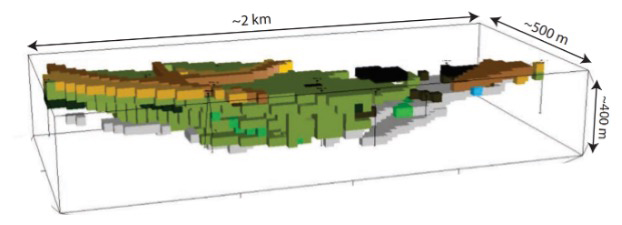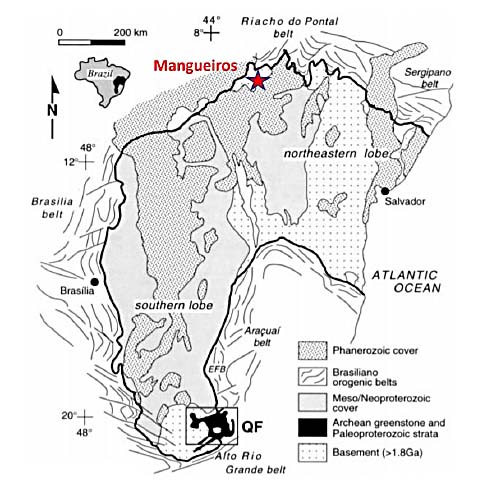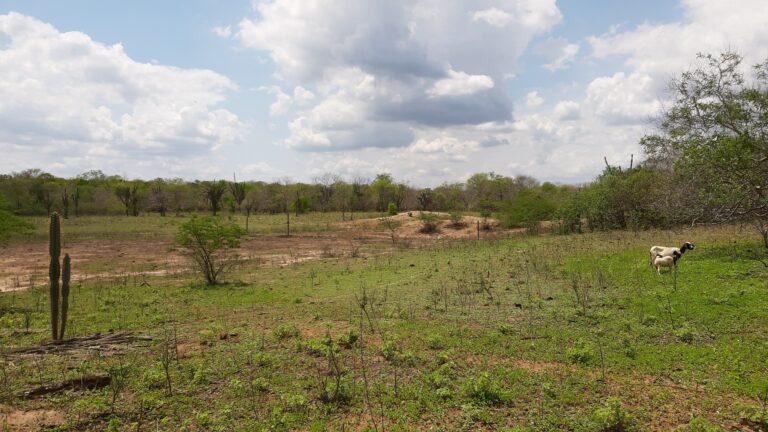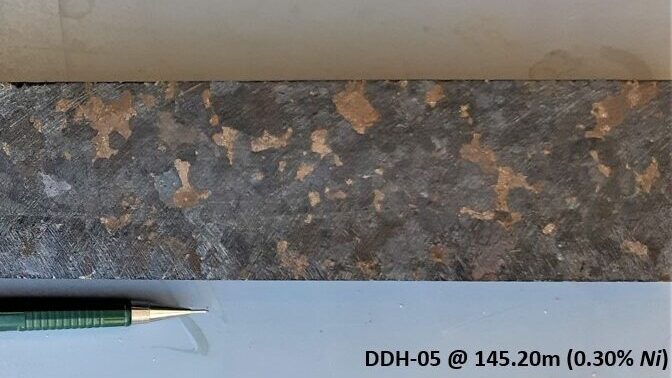About

The Mangueiros deposit is a large scale and near-surface nickel sulphide prospect with extensive intervals of proven mineralization recorded in widespaced vertical drill holes. The deposit has exposure to nickel, copper and cobalt markets, highly attractive due to the electric vehicles battery narrative.
Continuous mineralization confirmed the existence of a large 2,000x500m shallow nickel sulphide orebody ready to be drilled. Over 80% of drillholes hit continuous significant nickel-copper-cobalt grades.
Mangueiros geology
The Mangueiros nickel prospect is located at the NW edge of the São Francisco craton, in its limit with the Rio Preto and Riacho do Pontal Brasiliano Fold Belts. The Sobradinho-Remanso and Serra da Boa Esperança complexes, of Archean-Paleoproterozoic age are the basement for the supracrustal units and Mangueiros intrusion.
Mangueiros intrusion is one of several mafic-ultramafic intrusions in those complexes, including Angico dos Dias (hosting a carbonatite-phosphate deposit, Campo Alegre de Lourdes (hosting a Fe-Ti-V deposit), and Peixe (Fe-Ti-V mineralized gabbro/pyroxenite).
The information available suggests a near-surface, horizontal, canoe-shaped ultramafic sill approximately 3 km long, 500-700 meters wide, 250-300 meters deep, mainly composed by an incomplete and unlayered stratigraphy made of pyroxenites and peridotites that are enclosed by pelitic meta-sediments. The ultramafic intrusion is oriented NW-SE and contains continuous sulphide mineralization as inter-cumulus or, locally hydrothermally remobilized pyrrhotite, pentlandite, chalcopyrite and pyrite. The ultramafic assemblage consists of massive medium to coarsely crystalline olivine and clinopyroxene cumulates with disseminated sulphides. Magmatic textures are well preserved and there is not clear evidence of layering.
The sulphide minerals are quite homogeneously disseminated (1-5 vol. %) along almost all drilled ultramafic rocks as blebs with textures like those originated from immiscible fluids segregated from ultramafic magmas, being the typical assemblage formed by pyrrhotite > pentlandite > chalcopyrite. The ultramafic body is emplaced in metamorphosed black (graphitic) schists, which show strong ductile deformation at the basal contacts.




